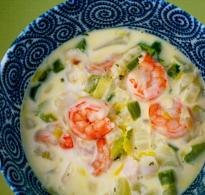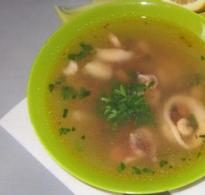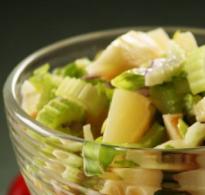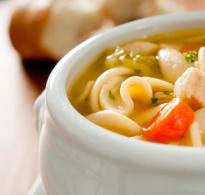Is it possible to fry various foods in butter: the benefits and harms. What oil is best for frying
The debate about what is the right way to cook food has been going on for decades.
What oil is best for frying? Scientific information is constantly changing, and besides, sometimes some food concern aggressively enters into the discussion with an advertisement for its product and turns the perception of a part of the public upside down.
For consumers, only the opinion of experts is really important, although it should be taken with a certain restraint.
The opinion of scientists on the best oil for frying
When making conclusions about how useful this or that fat is for frying, scientists do not take into account the question of taste. The fact is that at high temperatures, changes in the structure of the oil occur and various substances harmful to health can occur. And this is what is discussed in various analyses. In general, it is indicated that those fats that contain monounsaturated fatty acids are better suited for frying. Those dominated by polyunsaturated are better for cold cooking.
Salo
Both pork and goose are suitable, although the latter usually has a higher water content. Therefore, it is required for cooking more. Lard can be excellent for cooking, it copes well with high temperatures, but it has a high content of saturated acids. And pork is still full of cholesterol. People who lead a healthy lifestyle need to control their use.
Palm oil
Very suitable for frying, but, unfortunately, like lard, it has a high content of saturated acids.
Coconut oil
A similar case, as with lard and palm. Great for preparing various dishes, but be careful with calories and cholesterol!
Rapeseed oil
Refined is often cited as one of the best frying oils for its saturated acid content. It has another advantage, after frying it is well absorbed into napkins, and thanks to this, dishes are to some extent healthier.
Sunflower oil
In its refined form, it also belongs to high-quality frying oils. Unrefined is suitable only for short-term heat treatment and stewing. Of course, if you like a specific flavor.
rice oil
Cooking on it is very good, but, unfortunately, the high price is an obstacle. At high temperatures, it overcooks very slowly and has a high content of natural antioxidants.
Corn oil
Universal product. It can be fried, stewed and used for deep-frying. It does not produce any harmful compounds. Consumed sparingly, does not smoke or burn.
Olive oil
Virgin is ideal for salads and very quick cooking of vegetables, pasta, sautéing onions until translucent, etc. Can I fry in olive oil? Not worth it in the usual way.
If you want to cook any breaded products where you need to keep the oil at a high temperature for a long time, it is better to choose a refined one, which is not at all suitable for cold cooking.
Butter
It can be used for short frying (for example, for scrambled eggs, toast or toasting vegetables for soup), but dangerous substances appear in it for a long time, so it is very unsuitable for this.
But if it is melted, it changes its qualities and withstands a higher heating point.
Examples of unsuitable oils that you should not fry with at all:
- from grape seeds
- sesame,
- linen.
- soft margarine.
With hydrogenated fats, things are a little more complicated. Some are very high quality, others are quite the opposite, especially those that are cheaper, so it is advisable to avoid them when frying.
Thus, it turns out that there should be at least two bottles of oil on the shelf - one for frying, and the second for cold dishes. Well, before you succumb to the calls of another miracle oil advertisement, remember about everyday experience. Why change the good for the dubious best?
Milk fat is often used to prepare a wide variety of dishes. It not only has excellent taste, but also contains many vitamins and elements necessary for the proper functioning of the human body. But the answer to the question of whether it is possible to fry in butter is still uncertain. There are facts proving the negative impact of milk fat, but they come into force mainly when this product is used incorrectly. Before making a choice in favor of butter or other oil, it is recommended to understand how it is right and what can be fried on it.
Butter choice ghee or butter?
Fat from milk in solid form contains vitamins of groups A, K, E, D, various macro- and microelements, as well as phospholipids, sterols and other important substances. Therefore, natural animal oil is often used for cooking various dishes, both in finished form and during heat treatment. But such a useful product also contains harmful cholesterol, which is formed after the melting process. Some housewives simply do not know how to properly fry using this ingredient, and how to choose natural ready-made milk fat, which brings not only benefits, but also the desired taste.
 A creamy treat differs from a ghee treat by having a lower smoke point, which is important for long frying. The baked product also gives the dish a nutty flavor and creates a golden crust on the surface. The use of such ingredients will depend on their quality and the impurities included in the composition.
A creamy treat differs from a ghee treat by having a lower smoke point, which is important for long frying. The baked product also gives the dish a nutty flavor and creates a golden crust on the surface. The use of such ingredients will depend on their quality and the impurities included in the composition.
Is it possible to fry minced meat or cook whole meat in butter, and also, is it not harmful to eat such a dish? It is possible to use solid milk fat, like lard, for preparing meat snacks, if certain rules are followed.
Advice! It is not necessary to melt the product too much, otherwise it will not only lose its useful properties, but also begin to smoke, “shoot” and cause burning.
It is also necessary to take into account the opinion and experience of culinary experiments, which urge not to bake with ingredients of animal origin that require a long toasting time.
What foods can be fried

Is it possible to fry several eggs in butter to enjoy a tasty and healthy scrambled egg, where the eggs will not be burnt, but will acquire a crispy crust? Preparing such a breakfast will be quite simple and easy, and the result will please with its attractive aroma only if you use a good solid product without harmful inclusions. When natural milk fat was not found in your kitchen, it is better not to use spreads or margarine, as they contain a lot of low-quality vegetable oils.
Experienced housewives assure that in order to be able to fry pancakes in butter until golden brown, and to give them a special taste that distinguishes fried pancakes on a different type of fat, you must not only choose the ingredient responsibly, but also observe a low level of heating of the pan. Natural butter loses its usefulness when overheated, and also spoils the taste and smell of the finished dish.
Is it possible to fry pasta or vermicelli so that they turn out to be fried with a crust if cooked in creamy fragrant oil? Any pasta can be fried in a pan using melted or butter fat. They contribute to the appearance of the crust and give a special taste. The main thing is to observe the cooking time, choose durum pasta and oils of natural origin.
Various snacks can be baked on milk fat, but those that do not require high temperature and a long time to cook are best.
Oil application
For a long time it was believed that the use of an oil ingredient of animal origin in the diet of most people is extremely harmful. Nutritionists talked about its negative impact on the vascular system and cholesterol levels. But in a daily dose (30 grams), there is not much of such a substance. Cholesterol is needed by the human body in moderation, as it performs many important functions, such as protecting against pathogenic microbes.
Ready-made animal fat is useful even for children, but it is better to use it in its natural state. This milk ingredient well envelops and soothes the mucous membranes, so it is used for sore throats.
Any oil has positive and negative indicators, but in order to minimize the harmful effects, you need to know how to properly apply each of them and in what form it is better to use.
What are the oils

Oils are of vegetable and animal origin, with each category subdivided into types.
The most common vegetable oils are:
- sunflower;
- olive;
- soy;
- mustard;
- linen;
- corn.
The most famous are sunflower and olive. Sunflower - is used more often than others, as it has a pleasant taste, is suitable for long-term cooking and is a budget option. Olive - has a higher cost and is recommended mainly for vegetable salads and fish snacks.
Vegetable ingredients for roasting should be chosen with a low amount of fat and a high burning point.
Animal fats are absolutely natural and hypoallergenic. An example is creamy, which is well absorbed in the human body, saturating it with useful substances.
Milk fat is widely used in the preparation of many dishes around the world. It is a healthy and tasty product, both in its natural form and as an addition to other ingredients. To fry in butter, you need to be able not only to choose it, but also to apply it correctly, observing the heating temperature.
Image copyright thinkstosk
The choice of oil for cooking is not an easy task, writes Michael Moseley.
When it comes to fats and oils, we are spoiled for choice. Supermarket shelves are bursting with all sorts of options. But lately, the choice has been confusing due to the huge number of discussions about the benefits and harms of consuming different types of fats.
In the program Trust Me, I "m a Doctor ("Trust me, I'm a doctor"), we decided to look from the other side, asking the question: "What fats and oils are better to cook with?".
To find out, we offered the people of Leicester different types of fats and oils and asked our volunteers to use them in their daily cooking. We also asked volunteers to keep the oil leftovers in order to analyze them later.
The participants of the experiment used sunflower oil, vegetable oil, corn oil, cold pressed rapeseed oil, olive oil (refined and extra virgin), butter and goose fat.
After use, oil and fat samples were collected and sent to the School of Pharmacy at De Montfort University in Leicester. There, Professor Martin Grootveld and his colleagues conducted a parallel experiment in which they heated the same oils and fats to frying temperatures.
When you fry or bake at high temperatures (around 180 degrees Celsius), the molecular structures of the fats and oils you use change. They go through oxidation - interact with oxygen in the air and form aldehydes and lipid peroxides. At room temperature, something similar happens, only more slowly. When lipids go rancid, they are oxidized.
Consumption or inhalation of aldehydes, even in small amounts, has been associated with an increased risk of heart disease and cancer. So what did Professor Grootveld's group find out?
"We found out," he says, "that oils rich in polyunsaturated fats - corn oil and sunflower oil - produced very high levels of aldehydes."
I was very surprised, because I always considered sunflower oil to be healthy.
Image copyright BBC World Service Image caption Salo has a reputation for being harmful"Sunflower and corn oils can only be used," says Professor Grootveld, "as long as you don't heat them up, like frying or boiling them. It's a simple chemical fact that something that is considered good for us turns into something not at all useful at standard frying temperatures."
Olive oil and cold-pressed rapeseed oil produced much less aldehydes, as did butter and goose fat. The reason is that these oils are rich in monounsaturated and saturated fatty acids, and they remain more stable when heated. In fact, saturated fatty acids hardly ever go through an oxidative reaction.
Professor Grootveld generally advises the use of olive oil for frying and other heat treatments: "Firstly, because fewer of these poisonous molecules are produced, and secondly, the molecules produced are actually less harmful to the human body."
His research also suggests that when it comes to cooking, frying in fatty animal fats or butter may be preferable to sunflower or corn oil.
"If I had a choice," he says, "between lard and polyunsaturated fats, I would use lard all the time."
Another surprise came from our research, as Professor Grootveld's team found, in several samples sent in by our volunteers, a couple of new aldehydes that had not previously been observed in heating oil experiments.
"We have discovered something new for science," he says with a smile on his face. "This is the first in the world, I am very, very, happy about it."
I'm not sure our volunteers would have been equally enthusiastic about their cooking producing new, potentially poisonous molecules.
So what is Professor Grootveld's general advice?
First of all, try to fry less, especially at high temperatures. When frying, minimize the amount of oil used, and also try to remove the remaining oil from fried food, you can use a paper towel.
To reduce aldehyde production, use oils or fats rich in monounsaturated or saturated lipids (preferably more than 60% of one or the other and more than 80% combined) and low in polyunsaturated fats (less than 20%).
Professor Grootveld says olive oil is the ideal "compromise" oil for cooking, "because it contains about 76% monounsaturated fat, 14% saturated fat, and only 10% polyunsaturated fat—monounsaturated and saturated fats are more resistant to oxidation than polyunsaturated fats."
When it comes to cooking, it doesn't really matter if the olive oil is virgin or not. "The levels of antioxidants found in virgin foods are not sufficient to protect us from heat-induced oxidation," he says.
His final piece of advice is to always store vegetable oils in a cupboard out of the light and try to avoid reuse as this also leads to the accumulation of harmful by-products.
What you need to know about fats
Image copyright BBC World Service- Polyunsaturated fats Contain two or more carbon-carbon double bonds. When consumed in foods such as nuts, seeds, fish, and leafy greens, they are beneficial to health. However, the benefits of consuming sunflower or corn oils, although they are rich in polyunsaturated fats, are much less clear.
- Monounsaturated fats They contain only one carbon-carbon double bond. They are found in avocados, olives, olive oil, almonds and hazelnuts, as well as lard and goose fat. Olive oil, which contains 76% monounsaturated fats, is the main component of the Mediterranean diet, which, as a result of studies, has been found to significantly reduce the risk of heart disease.
- Saturated fats Do not contain double bonds between carbon molecules. Although we are being urged to stop consuming saturated fats, especially dairy products and other animal fats, the benefits of doing so are still contested.
Do you often have enough time to think about the little things? For example, the oil on which food is fried is such a trifle, is there really nothing more to think about? The main thing is that the oil should be tasteless, odorless, cholesterol-free and cheaper - I'm sure a lot of people think so. And they buy exactly this kind of oil - refined, deodorized, that is, extracted without any respect (note - I do not write “squeezed out”, because this is not entirely true), oil that has been purified from impurities in a chemical, and rather impartial, way.
Meanwhile, the choice of oil is the most important moment, both from the point of view of both culinary and medical. The choice of oil for frying is not really limited to corn and sunflower: let's figure out which oil is best for frying, based on experience and knowledge about the chemical composition of various oils.
So, if we talk about different oils from a culinary point of view, we are concerned about a few specific things:
- The smoke point, that is, the temperature after which the oil begins to smoke, and its chemical composition changes under the influence of heat. Refined oils have the highest smoke point, extra virgin olive oil has the lowest. At the same time, let's not forget that usually - apart from deep-frying - the product cools the oil to a temperature below the smoke point, so you can fry on Extra Virgin, you just need to do it wisely, without overheating the oil before laying the products.
- Tastes and aromas that oil imparts to products. The principle “the less the better” does not always work here.
- The ability of an oil to form a brown crust is not the same for every oil.
From a health point of view, the following points are critical:
- Saturated fat content. It is saturated fats that are not completely broken down in the body that lead to the formation of fatty deposits and cause a narrowing of the lumen of the arteries. Saturated fats, of course, are not fatal, but it is highly desirable to control their consumption.
- The content of impurities. The fat content of vegetable oil is 100% or so, and the amount of impurities is minimal, other types of oil cannot boast of this.
- Smoke point. One of the most important aspects, because after the oil begins to smoke, irreversible chemical processes take place in it, which lead to the formation of carcinogens.
Now let's look at the different types of oils in relation to how they behave during frying and what effect they have on your body.
Butter
Butter is about 80% fat, with various impurities such as milk protein and water making up the remainder. It is rich in vitamin A, but also in saturated fats, which make up about 50% of the total oil. When butter is heated, the same impurities begin to burn in it rather quickly, and the butter begins to darken and emit a nutty aroma. Frying on butter is very convenient if you want to quickly get a golden crust, and if you do not allow the butter to overheat, the products fried on it acquire a pleasant taste. At the same time, let's not forget that everything said above refers to real butter: alas, some manufacturers add low-quality vegetable fats to it, which is immediately visible if you dissolve a piece of such butter in a pan.
When to fry in butter:
- when the roasting temperature is not too high.

Melted butter
Clarified butter, or ghee - the same butter, only refined from impurities. Such oil can be stored for a long time and is actively used in Indian cuisine and other cuisines of Southeast Asia, as well as in traditional medicine. Like regular butter, ghee contains a high amount of saturated fat, but unlike its cousin, it has a high smoke point of about 250 degrees, which makes it suitable for deep frying. In general, it can be a good idea to keep a small jar of ghee in the fridge for occasional frying—it works just like butter for sautéing or simmering vegetables, but won't burn if you accidentally overheat the pan.
When to fry in clarified butter (ghee):
- when you need to quickly get a golden crust;
- when you need to slowly simmer foods in oil;
- when you need to give the product a pleasant nutty flavor;
Refined vegetable oil
The cheapest oil that is in every store. It has a relatively high smoke point, lacks saturated fat, has little to no flavor of its own, and is seemingly ideal for frying. But there is one caveat. This is not too advertised, but as one of the stages in the extraction of vegetable oils, which are then subjected to purification, a chemical method is often used - the seeds are treated with chemicals in order to extract the maximum oil from them. Cleaning and deodorizing oil is also not a mechanical process, but a chemical process, so the oil that is squeezed from seeds and the one that is on the supermarket shelf do not have much in common. In general, such oil can be used for any frying, but if there is such an opportunity, I would advise not to get carried away with it.
When to fry in refined vegetable oil:
- when it is necessary to avoid the appearance of foreign flavors;
- when you are deep-frying or at a high temperature.
Olive oil
For some reason, we often oppose olive oil and some abstract “vegetable oil”. I disagree with this fundamentally, but okay, so be it. In this category, I have included all olive oil, except extra virgin oil, which we will talk about a little later. These include olive oil, which has been mechanically refined to remove impurities, allowing it to be used for frying, and pomace oil, that is, oil that is chemically extracted from the pomace after the mechanical pressing of the Extra Virgin oil is completed. In our country, such oil is not in great demand, since it costs significantly more than refined corn or sunflower oil, but it surpasses them in terms of taste and is less harmful to health.
When to fry in olive oil:
- when you need to slowly simmer foods in oil;
- when the roasting temperature can be high.

Extra Virgin Olive Oil
It is generally believed that you cannot fry with Extra Virgin oil - it has a low smoke point, a fairly powerful taste and aroma of its own, and, importantly, a high price. However, I sometimes use Extra Virgin Olive Oil if I don't want to sauté but sauté the vegetables on low heat to release the maximum flavor.
When to Fry with Extra Virgin Olive Oil:
- when you need to slowly simmer foods in oil;
- when you need to give the product a pleasant aroma of olive oil;
- when the roasting temperature is not high.
Salo
It is worth starting with the fact that nutritionists, in general, consider any fried food to be harmful due to the large amount of trans fats contained in it, which are not beneficial for the body. Frying in vegetable oil carries the same harm, because when it is heated to a high temperature, carcinogenic substances dangerous to the body begin to be released, causing malignant tumors or benign neoplasms.
But before you decisively refuse any fried food, it's worth a little understanding of all the warnings and tips.

Which product to choose?
Fried foods are bad in and of themselves, especially in unreasonable amounts, and the first thing to do for your health is to limit your consumption of them. But also, many people like to use too much oil when frying or overcooking food, achieving a richer taste, which is also extremely harmful.
Dangerous and frying in the same oil several times.
It is worth remembering that the oil should be used only once. This will bring much less harm to the body, and will not spoil the taste of the dish.
If possible, you should replace some fried foods with stews and baked ones, and also include as many vegetables and fruits as possible in your daily diet. No matter how delicious fried potatoes, pies and pancakes are, you should not get carried away with their use.


Now, having dealt with this, we can begin to discuss the oil, the use of which in frying will bring the least harm.
The statistics say that sunflower oil and less popular corn oil are considered the least useful. Olive and coconut, according to scientists, contain much less harmful substances than their refined counterparts. The same list also includes melted butter.
Sunflower oil is the most popular and widespread in the CIS countries, although in the West cooking with it is considered unprofessional, and chefs prefer creamy oil.
In addition to the harmful substances that have already been mentioned, sunflower oil also contains useful substances, such as E and F. Using it in an unrefined form is healthier, although it is not suitable for long-term frying.

Corn oil, in comparison with sunflower oil, is considered more useful. It is also used in refined form, recommended in dietary and baby food.
There are almost legends about the benefits of olive oil. It is good for skin and hair, improves the activity of the stomach, has the ability to heal gastric ulcers, has a choleretic and laxative effect. Not everyone knows, but it also benefits the cardiovascular system due to the content of omega-3 acids in it.

Coconut oil is highly recommended by nutritionists for a healthy diet. The secret of its popularity is its low fat content and the least tendency to break down when cooked. Its only disadvantage is the high cost and complexity of use in cooking.
If we talk about butter, it is useful in itself, as it contains many vitamins A, D, E and K, improves and heals the skin, hair and nails, has a high burning point and gives the dish a delicate nutty flavor. Many dishes are advised to fry on milk fats, so you should figure out what are its advantages and disadvantages.

What is best for frying?
It is worth starting with the fact that butter with vegetable additives will not bring any benefit, just the opposite. This also applies to margarine, and various spreads, which definitely need to be excluded from your diet. In addition, the taste of dishes prepared using these products will be much worse than those prepared with natural ones.
In the recipe of many dishes there is an advice: "fry in butter." This recommendation can also be dictated by the fact that milk fat can be included in the composition of the dish, and mixing it with vegetable fat is another great mistake and harm to health.
Even if you still prefer sunflower oil, dishes that use sour cream or cream are safer to fry in butter.
In addition, many housewives claim that only butter, when fried, allows you to achieve an appetizing golden crust, a pleasant smell and taste without an admixture of bitterness. Others, on the contrary, believe that butter can be more bitter than sunflower oil. Let's find out what it is connected with.

Any oil, if overheated or used repeatedly without changing it, will start to taste bitter as a result. To prevent this from happening with butter, do not cook on it those foods that require a long frying time.
Fried eggs, pancakes, pancakes, cheesecakes - butter is not only suitable for frying these dishes, but also recommended.


We also remember that excessive heating of the pan during cooking will not lead to anything good. There is a risk not only to spoil the taste of the dish, but to completely burn it. Nothing harms health like burnt food.
Don't melt the butter too much. It will burn, smoke, shoot and impair the taste of food.
If you need to cook a dish in butter that requires frying for a long time, you should use ghee.
It is suitable for long frying, its taste is even more pronounced than that of butter, it does not burn, it is suitable for people with lactose intolerance due to the lack of milk fat in it.
Ghee is cheaper than olive and coconut oil, it can be found in any store, or you can cook it at home. You do not need a lot of skills and special skills to melt ordinary butter in a water bath. This process will take no more than half an hour, it will last for a long time, and most importantly, its use will not make your food harmful.

Milk fat is very popular for cooking in many countries. You need to learn how to choose it correctly, observe the conditions of storage and preparation, and then your food will be not only tasty, but also healthy.
Any oil has its positive and negative properties, but you need to figure out which and in what form is better to use, and which one is suitable for a particular dish, and then you can achieve minimal harm.
About what will happen if you fry scrambled eggs in butter, see the next video.






